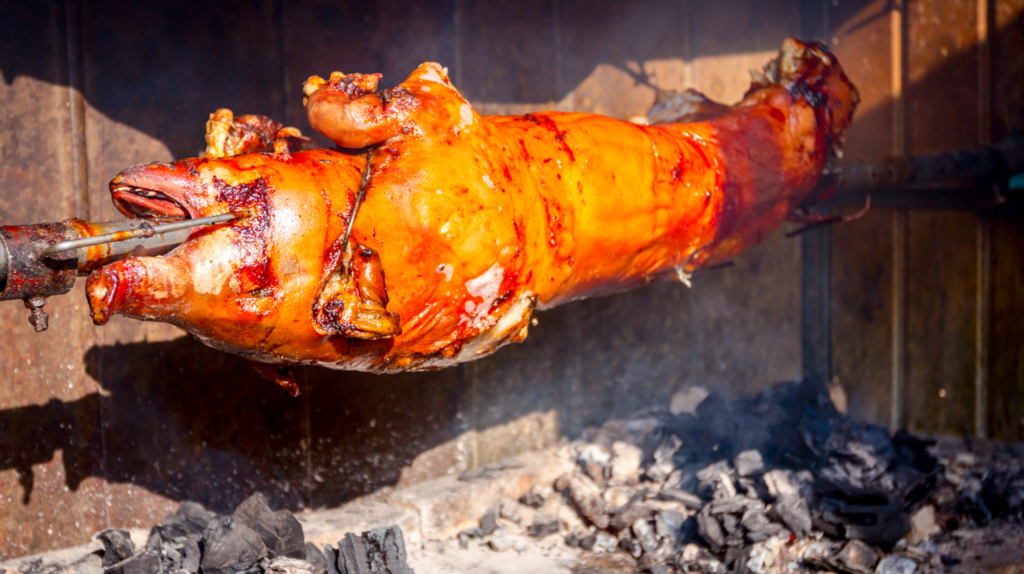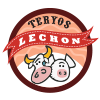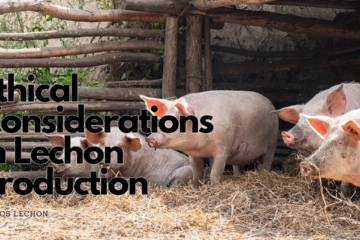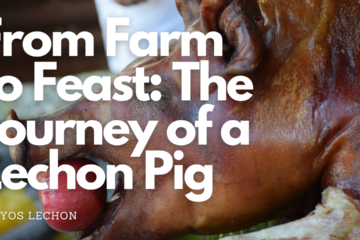Lechon, a roasted whole pig known for its crispy skin and succulent meat, is a culinary icon in the Philippines and many other cultures. Achieving the perfect lechon is an art that requires not only skill and patience but also the right equipment. Whether you’re a home cook attempting a festive lechon for a special occasion or an entrepreneur starting a lechon business, having the proper tools can make all the difference. This article explores the essential lechon cooking equipment, offering insights into their functions and tips for optimal use.
The Roasting Pit: Heart of Traditional Lechon

The traditional method of cooking lechon involves roasting the pig over an open fire using a roasting pit. This method is still widely used in rural areas and by purists who swear by its authenticity.
- Construction of the Roasting Pit:
- Materials: Typically constructed from bricks or concrete blocks, the pit should be sturdy and capable of withstanding high heat.
- Dimensions: The size of the pit depends on the size of the pig. A typical pit might be about 4-6 feet long, 2-3 feet wide, and about 3 feet deep.
- Fuel: Wood and charcoal are the traditional fuels used. Hardwoods like acacia, coconut, or local hardwoods are preferred for their consistent heat and flavor-enhancing smoke.
- Managing the Fire:
- Temperature Control: Maintaining a consistent temperature is crucial. The fire should be hot enough to crisp the skin but not so hot that it burns the pig before the inside is cooked.
- Placement of Coals: Coals are usually placed to the sides of the pit to create indirect heat, allowing for a more even cooking process.
The Rotisserie Spit: Ensuring Even Cooking
A rotisserie spit is essential for evenly cooking the pig. It ensures that the meat is uniformly exposed to the heat, resulting in a consistent texture and flavor.
- Types of Rotisserie Spits:
- Manual Spits: These require manual turning, usually with a hand crank. They are more labor-intensive but offer greater control.
- Motorized Spits: Powered by an electric motor, these spits automatically rotate the pig, providing consistent and even cooking without constant supervision.
- Spit Materials and Construction:
- Material: Stainless steel is the preferred material for spits due to its durability and resistance to rust and corrosion.
- Design: The spit should be sturdy enough to support the weight of the pig. It often includes prongs or clamps to secure the pig in place during rotation.
The Roasting Oven: Modern Convenience
For those seeking a more controlled and less labor-intensive method, a lechon roasting oven is a great alternative. These ovens come in various sizes and designs, each offering unique benefits.
- Types of Roasting Ovens:
- Gas Ovens: Offer precise temperature control and consistent heat distribution.
- Electric Ovens: Provide easy-to-use settings and often come with timers and temperature gauges.
- Wood-Fired Ovens: Combine traditional flavor with modern convenience, allowing for the use of wood as a fuel source within a controlled environment.
- Key Features:
- Temperature Control: Look for ovens with accurate temperature settings to ensure even cooking.
- Rotisserie Function: Many modern ovens come with built-in rotisserie mechanisms, combining the benefits of a traditional spit with the convenience of an oven.
Essential Accessories for Lechon Preparation
Beyond the main cooking apparatus, several accessories are crucial for preparing and serving lechon.
- Marinating Tools:
- Injectors: Used to infuse the meat with marinades and brines, ensuring deep flavor penetration.
- Marinating Containers: Large, non-reactive containers are ideal for marinating the pig overnight.
- Basting Equipment:
- Basting Brushes: Used to apply marinades, oils, and other basting liquids during cooking to keep the meat moist and flavorful.
- Spray Bottles: For evenly applying basting liquids without disturbing the pig.
- Meat Thermometers:
- Instant-Read Thermometers: Provide quick temperature readings to ensure the pig is cooked to the proper internal temperature.
- Probe Thermometers: These can be left in the meat throughout the cooking process, with a digital display showing the temperature.
- Carving Tools:
- Heavy-Duty Knives: Essential for breaking down the pig after roasting. Look for knives with strong, sharp blades.
- Cleavers: Useful for cutting through bones and tougher parts of the pig.
- Carving Boards: Large, sturdy boards provide a stable surface for carving and serving the lechon.
Safety Equipment: Protecting the Cook
Safety should always be a priority when cooking lechon, especially when dealing with high heat and heavy equipment.
- Heat-Resistant Gloves:
- Protect your hands and forearms from burns when handling hot equipment and the pig.
- Look for gloves that are both heat-resistant and flexible for better dexterity.
- Aprons and Protective Clothing:
- Heavy-duty aprons can protect against splatters and heat.
- Wear long sleeves and pants made from fire-resistant materials when working near open flames.
- Fire Extinguishers:
- Always have a fire extinguisher nearby when cooking with open flames or high heat to quickly address any accidental fires.
Tips for Optimal Use of Lechon Cooking Equipment
- Preparation and Planning:
- Ensure all equipment is clean and in good working condition before starting.
- Plan the cooking process, including marinating time, roasting duration, and resting time for the meat.
- Consistent Monitoring:
- Regularly check the temperature and condition of the pig to avoid overcooking or burning.
- Adjust the heat source as needed to maintain consistent cooking conditions.
- Resting the Meat:
- Allow the lechon to rest for at least 30 minutes after cooking to let the juices redistribute, resulting in moister and more flavorful meat.
- Cover the pig loosely with foil during resting to retain heat.
Innovation in Lechon Cooking Equipment
The culinary world is always evolving, and lechon cooking equipment is no exception. Recent innovations have aimed at making the process more efficient and accessible.
- Smart Roasters:
- Equipped with digital controls, smart roasters can be programmed to adjust temperature and rotation speed, ensuring perfect results every time.
- Some models even come with smartphone apps, allowing for remote monitoring and adjustments.
- Infrared Rotisseries:
- These use infrared technology to cook the pig evenly and quickly, reducing cooking times while maintaining quality.
- Infrared heat penetrates the meat more effectively, ensuring a crispy exterior and juicy interior.
- Eco-Friendly Options:
- Solar-powered roasters and ovens are gaining popularity for their environmental benefits.
- These options reduce reliance on traditional fuels, making the lechon cooking process more sustainable.
Conclusion
Cooking the perfect lechon is a blend of art, tradition, and the right equipment. From the rustic charm of a traditional roasting pit to the modern convenience of a high-tech roaster, each piece of equipment plays a crucial role in achieving that coveted crispy skin and tender meat. By investing in quality tools and following best practices, both home cooks and professional chefs can master the craft of lechon, delighting guests with this beloved dish.
Whether you’re celebrating a special occasion or expanding your culinary business, understanding and utilizing the essential lechon cooking equipment will set you on the path to success. Embrace the tradition, innovate with technology, and enjoy the process of creating a dish that brings joy and community to the table.




0 Comments